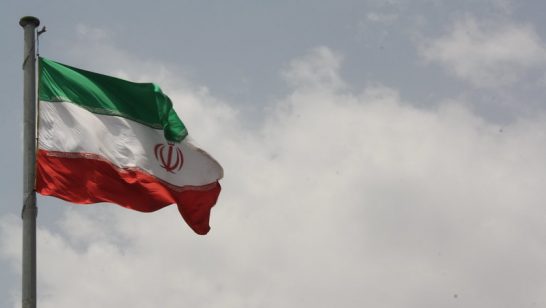
Within the last few weeks, several major developments have occurred regarding the Middle East: the conflict between Israel and Gaza, the postponement of the Helsinki conference due to launch a negotiation on a Middle East zone free of weapons of mass destruction (WMD), the announcement by Iran that it was stepping up its uranium enrichment, and the admission of Palestine as a non-member observer state by the United Nations. Do these developments mean that the prospect of removing all WMD from one of the most volatile regions of the world has been condemned to oblivion? Or on the contrary isn’t this new situation opening up a window of opportunity for progress towards that ultimate goal?
A ceasefire mediated by Egypt put an end on 21 November to an eight-day exchange of hostilities between Israel and the Hamas-controlled Gaza Strip. Israeli operation “Pillar of Defence” had started with the targeted killing of Ahmed Jabari, the commander of Hamas’s military wing as a response to indiscriminate launches of rockets from Gaza onto Israeli towns. This flare up of violence was generally attributed to two main political factors. One is the upcoming general elections in Israel, in which Prime Minister Netanyahu cannot appear as passive towards Hamas, hence the decision to weaken its military infrastructure. The second factor is the rift between Hamas in Gaza and Fatah in the West Bank: in this power struggle, Hamas attempted to destabilize Mahmoud Abbas in his bid for statehood at the United Nations.
Both the Israeli and Hamas unilateral initiatives, despite claims of success on both sides, have failed, as in many similar cases in the past. Disproportionate violence suffered again by Palestinian civilians did little to weaken the popularity of Hamas in Gaza. For his part, Mahmoud Abbas, crowned with his diplomatic victory at the United Nations General Assembly, now has the upper hand to achieve unity among the Palestinians and lead the peace negotiations with Israel towards the two-state solution.
It was not a coincidence that the “convenors” of the planned Helsinki conference on a Middle East zone free of WMD (Russia, the UK, the US as well as the UN) announced after the Gaza ceasefire that the event would be postponed. This conference was to be convened in 2012 as a result of a decision taken by all the states party to the Non-Proliferation Treaty (NPT) – excluding Israel – in May 2010. The “facilitator” from the host country, Ambassador Jaakko Laajava, had conducted extensive consultations on the possible format and agenda of the meeting. All countries from the Middle East, including Iran, had declared their intention to attend, except Israel, fearing isolation and being criticised for its nuclear policy.
The main reasons given by the US for the postponement were the “present conditions in the Middle East” and “the fact that states in the region have not reached agreement on acceptable conditions for a conference.” Russia considers that the meeting should be held before next April, when the states party to the NPT gather in Geneva; indeed if the 2010 decision is not implemented by then, the “convenors” would be held responsible for this failure. The UK is favourable to convening the conference “as soon as possible”.
One of the main stumbling blocks in the implementation of the WMD-free zone proposal (dating back to 1974) is the linkage, made by Israel with US support, between disarmament and a peace agreement. Israel, still feeling an existential threat (mainly from Iran, especially if Tehran develops a nuclear weapon), would consider full WMD disarmament only in the framework of a peace treaty implying full recognition from all states of the region as well as security assurances. For their part, the Arab states, who presented their peace initiative in 2002, believe that disarmament measures can be negotiated in parallel and would positively influence a peace agreement.
In the meantime, the dispute about Iran’s nuclear programme has been marred by yet more complicating developments. Tehran announced that it would increase “substantially” the number of its centrifuges producing nuclear fuel. This is in line with a report by the International Atomic Energy Agency (IAEA) saying that Iran has installed about 2,800 centrifuges at its Fordo site and is poised to double the number of operating centrifuges, from the current 700 to nearly 1,400. Iran will also soon conduct a test run of its heavy water reactor in Arak, despite UN demands to stop the work. As a reaction, the US sent an ultimatum to Iran: if by next March, no progress is made in Iran’s cooperation with the IAEA to assuage the concerns of the international community, Iran would be deferred again to the UN Security Council.
No one ever dreamed that launching a negotiation process in Helsinki would rapidly and magically solve all the problems of the Middle East. In fact, however, the basic conditions of success in this area can be identified. They include the following:
– The dilemma “peace first or disarmament first” cannot be solved, so parallel tracks seem appropriate, but with a priority focus on the core of the regional conflict, the Israeli-Palestinian conflict; once a peace agreement is on the horizon, stable and mutually beneficial relations between the Arab world and Israel can be achieved;
– As another priority, negotiations on the Iranian nuclear programme must be intensified in order to achieve a win-win solution: Iran should be allowed to enrich uranium but only up to 20 percent and under strict international controls preventing any military development; sanctions would be lifted as such a deal is implemented;
– Non-official dialogue should be encouraged among countries of the region to promote better understanding of each other’s threat perceptions or security concerns;
– Interim confidence-building measures mediated by the UN with the support of the US and the EU, should be envisaged, such as simultaneous ratification of, or accession to the Comprehensive Test Ban Treaty, the Chemical Weapons Conventions and the Biological Weapons Convention by all non-states parties in the region;
– The launch of a new “Helsinki process” (similar to the European one during the Cold War) should be accompanied with the establishment of “baskets” or working groups on the various aspects of the WMD-free zone project, including a future regional security architecture as well as the nexus between WMD and conventional armaments, encompassing missiles.
The post-Israeli election period next January opens a window of opportunity to pursue this agenda that should not be missed, as so many opportunities have been in the past.
Marc Finaud is currently Senior Advisor, Emerging Security Challenges Programme, Geneva Centre for Security Policy (GCSP). The views expressed here are personal and not those of the GCSP or any other organisation.
The opinions articulated above represent the views of the author(s), and do not necessarily reflect the position of the European Leadership Network or any of its members. The ELN’s aim is to encourage debates that will help develop Europe’s capacity to address the pressing foreign, defence, and security challenges of our time.


